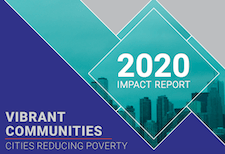A considerable momentum has developed around the perceived need for a national affordable housing strategy. The design of any such strategy should recognize who is in need, the size of the need, and where that need is greatest. This report presents facts on the affordability of housing
for those at risk of the most serious form of housing crisis, namely, the threat of homelessness. The facts span the period 1990-2014 to better understand if housing affordability is a new issue or one of long-standing. The facts identify the affordability of housing in each of Canada’s nine largest urban centers because national averages have little relevance for describing housing markets that are decidedly local. The facts focus on the affordability of the lowest-cost housing available to the very poor and identify the affordability of housing for different family compositions and for different types of accommodations. These facts show that the affordability of housing for the very poor is not, and has not always been, uniformly bad in all cities and for all family compositions. In some cities and for some family compositions however, the affordability crisis has been very serious and prolonged and shows little sign of abating. Any housing strategy must recognize these facts and needs to target support to those most in need.
No Vacancy. Affordability & Homelessness in Vancouver.



